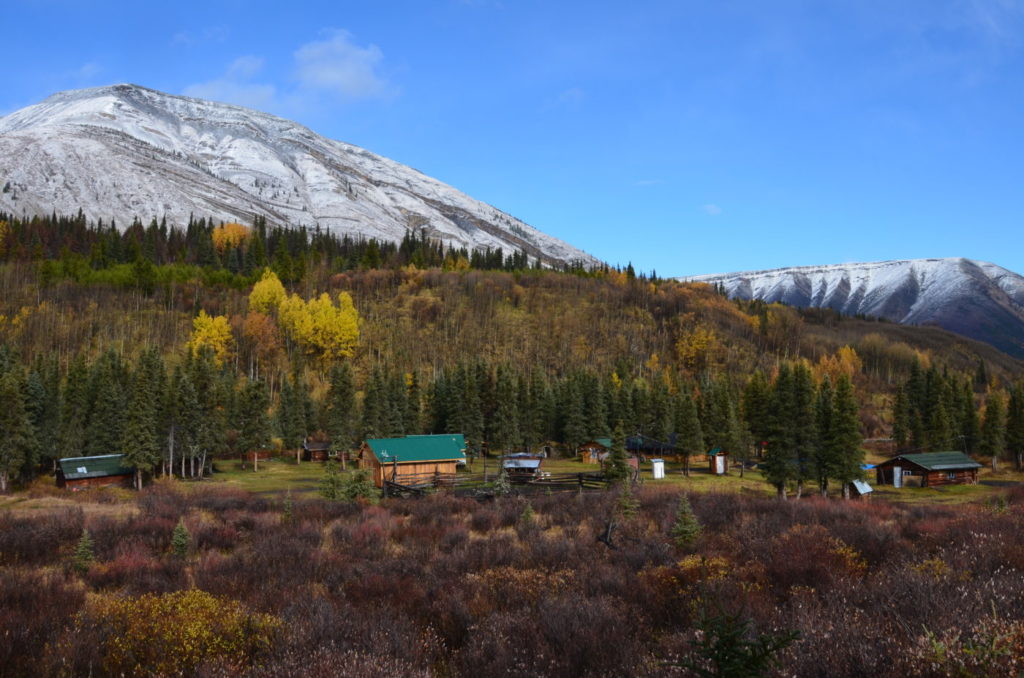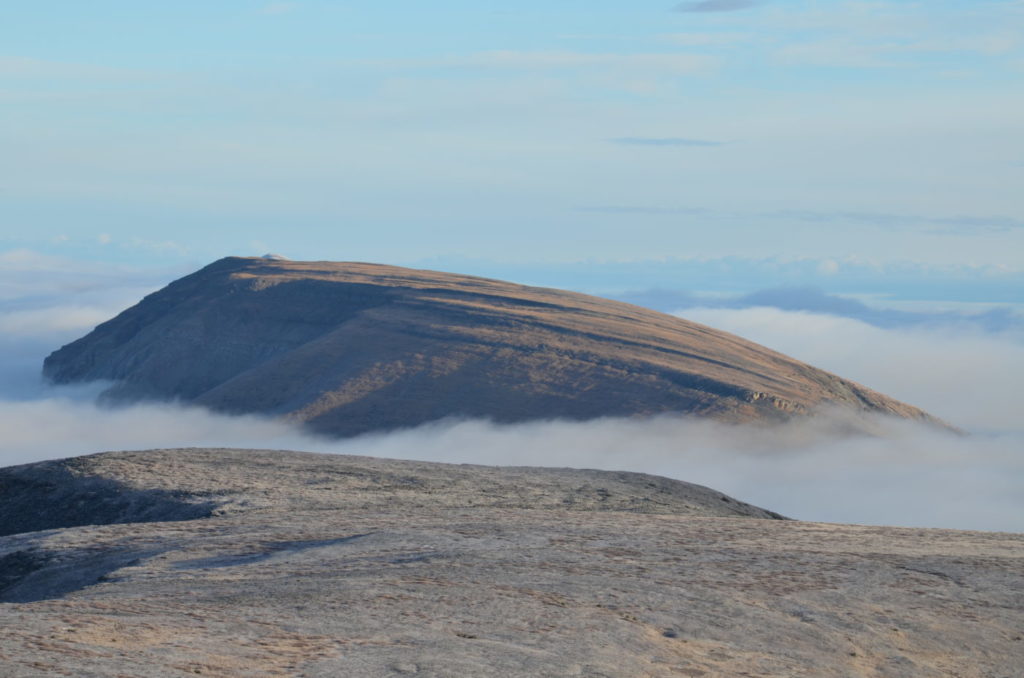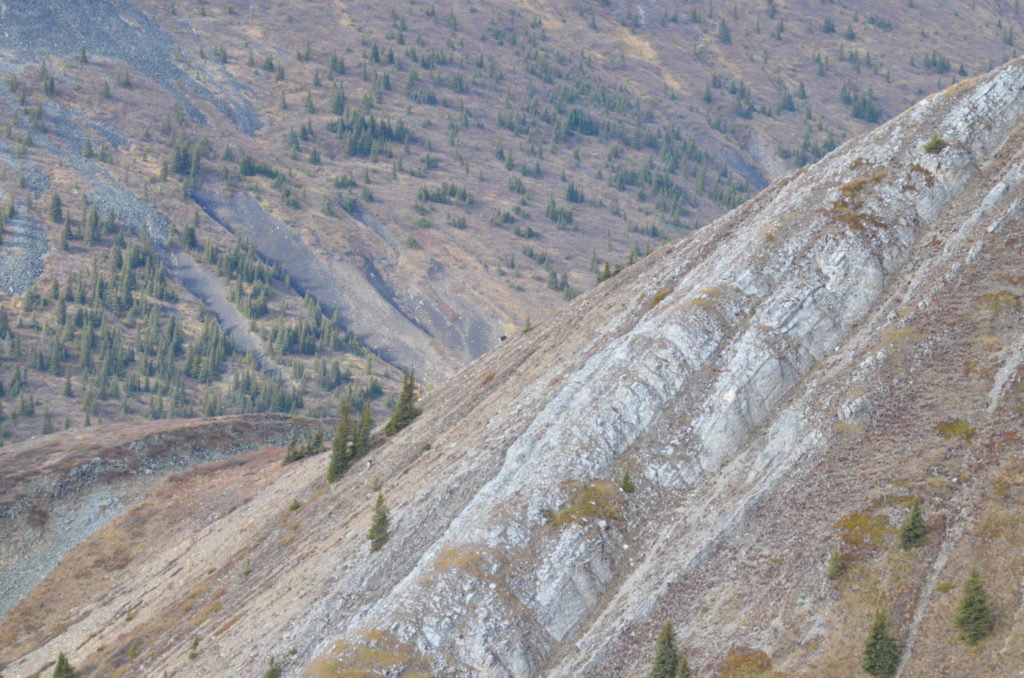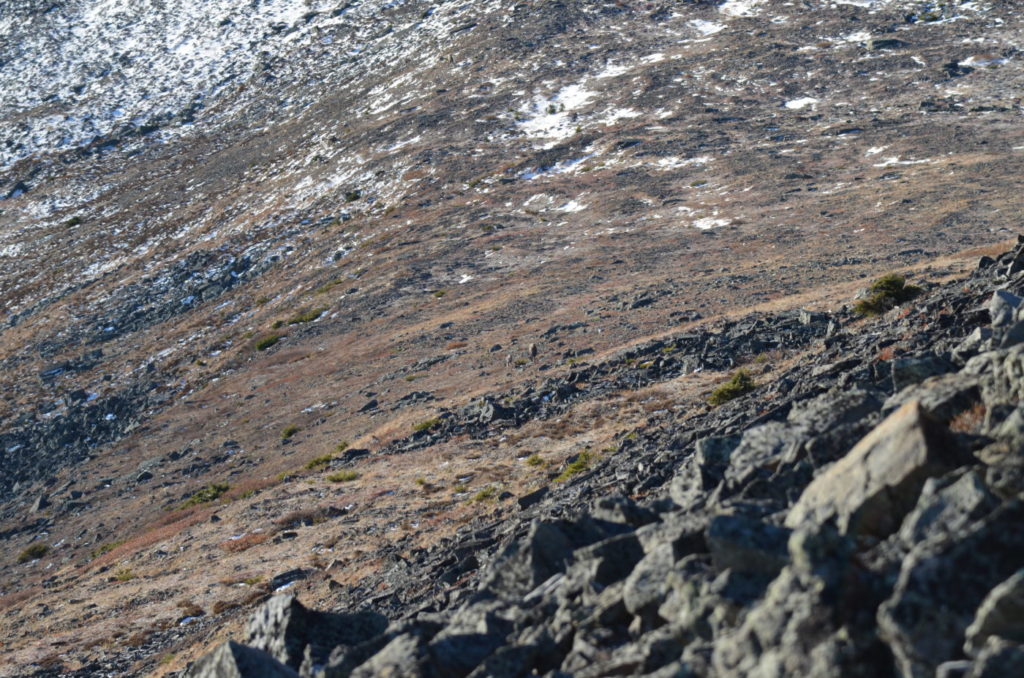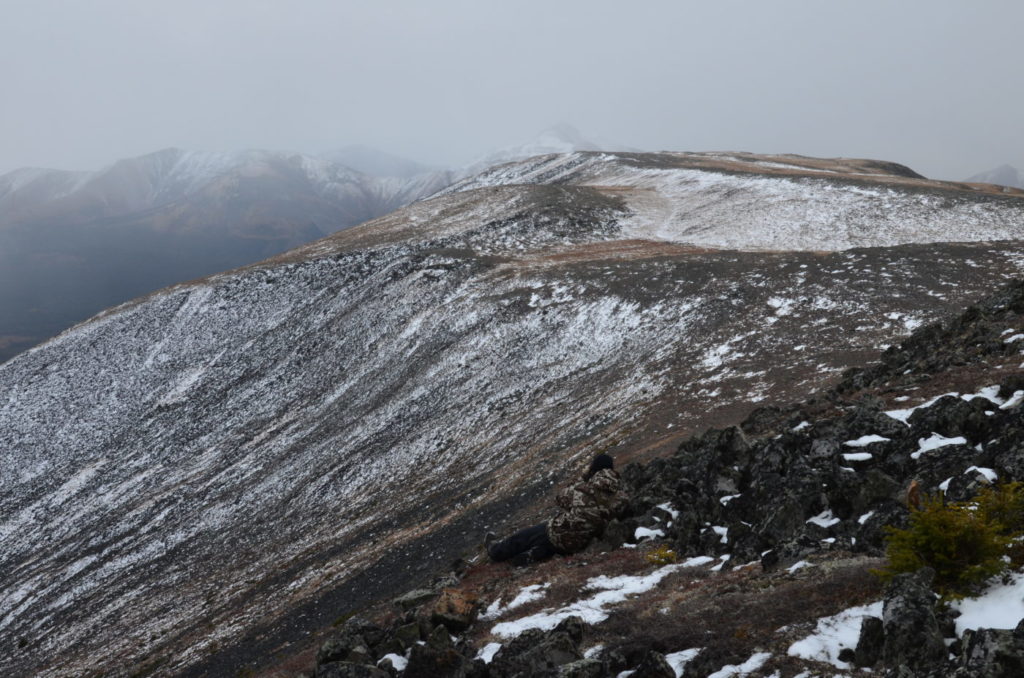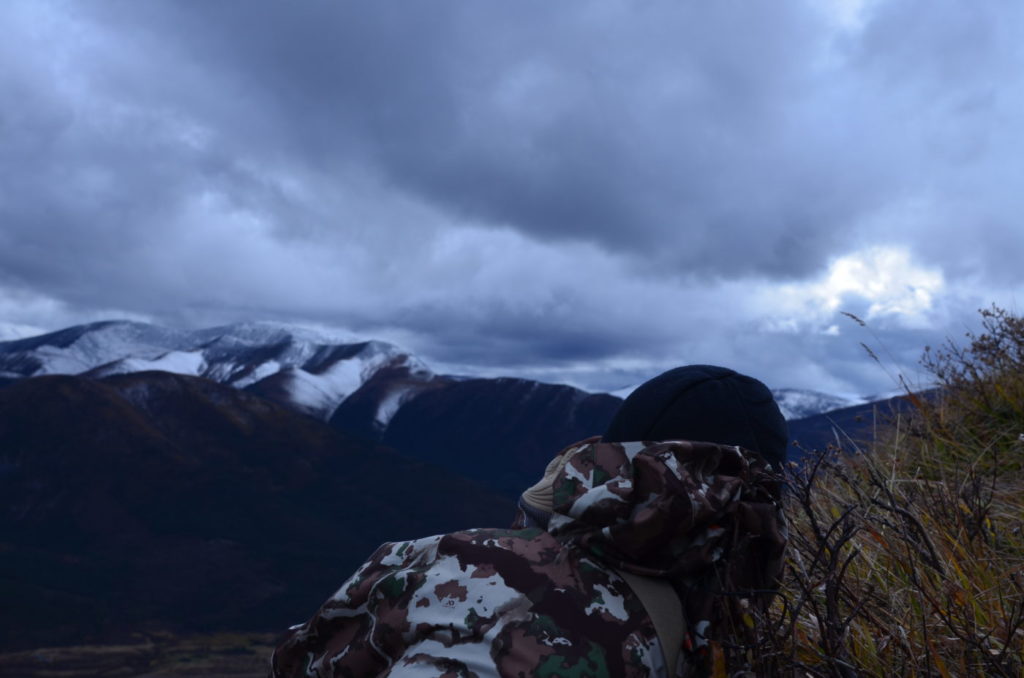The passion that leads many of us to the most beautiful and remote places in BC and the Yukon is Stone sheep hunting. It takes us miles off the beaten track, far from the nearest road, pickup truck, hot shower, and the easy ways of living that most people have become accustomed to. Part of the draw of hunting Stones is getting out there in the wilderness, relying on yourself, disconnecting from normal life, and doing things the hard way.
Many of us envision following in the footsteps of the legends of sheep hunting. I often think about the pioneers and homesteaders of the North. I’ll find an old cabin in the middle of absolutely nowhere and wonder which hunter, trapper, or prospector built it. The history of those who pioneered the North is fascinating. Imagine living in the 1950’s, or even earlier, loading 40 head of horses and heading off into the wildest country imaginable for a month-and-a-half long pack trip.
The backcountry is filled with the history of the first trail blazers with their axes and horse trails. I find it fascinating to hunt these areas that are rich in history. That said, many things have changed since the 50’s, from the number of sheep in the mountains, to optics and apparel, backpacks, how we transport ourselves, and of course how long hunting trips take. The unfortunate reality is it’s getting harder and harder to find areas where you won’t hear a float plane, jet boat, or see another hunter when hunting Stone sheep. Between social media, online hunting forums, and readily available harvest statistics it’s never been easier to zero in on the areas that produce the highest odds of harvesting a mature Stone ram. If you really want to experience the north like it was decades ago and are looking for both a challenging hunt and an incredible wilderness experience you may want to consider hunting a lower density Stone sheep region. This is the ultimate test of the dedicated sheep hunter in my opinion.
When we think about these low-density areas, areas that have less sheep per square kilometer than others, each of us probably thinks of somewhere and something different. Some might think about hunting the Yukon, while others think about less “popular” parts of northern BC. Obviously we want to have a chance at success and not hunt areas where finding rams is like hunting a needle in a haystack, so I find it important to hunt low-density Stone sheep somewhat differently than higher-density locations. It’s important to keep the differences in mind and adapt your hunting style to the area you’re hunting.
Approximately 25% of the population of Stones live in the Yukon, with the remainder in BC. When considering the low-density areas, there are additional factors that will determine your style of hunting. Some areas have thicker, boggier valley bottoms that will only allow you to backpack hunt, because they’re too swampy to take horses and there’s no feed if you got them there. Other areas are so remote that it’s impractical to get in and hunt without horses. You can backpack hunt remote low-density areas, but it will take a lot more effort and a lot more boot leather.
The lower the population density, the more important it is to be mobile. In my opinion that’s where using horses is a huge advantage. I know there are lots of backpack sheep hunters out there; I know it’s easier and quicker to get flown in to a remote lake, get dropped off and not have to worry if there is a camp spot where there’s enough grass for your horses overnight, or if your horses will run off and leave you high and dry when you’re way back in the mountains. At that point you may as well be backpacking anyways, right? It’s possible to lose valuable hunting time chasing horses, which can certainly happen. Still, in my experience, the mobility that horses provide often makes them a necessity in low density areas even if they add to your workload and take extra time and care.
When hunting low-density areas, it’s important to know the country you’re hunting inside and out. This means doing a whole lot more homework than in higher density areas. In high density sheep country, you’ll often spend your entire hunt in a relatively small area. Not the case in lower density regions. There’s more than one way to gather the critical information to increase your chances of success.
Talking to people who have spent an extensive amount of time in an area is undoubtedly the most effective way to gain knowledge without laying down your own horse or boot tracks. Knowledge that is passed down from one hunter to another is the most valuable, time tested intel there is. Using Google Earth is obviously a common practice among mountain hunters these days. For lower density areas, be sure to have a plan A, B, C and probably even D in place as it will almost certainly take more time and an adaptive mindset to get the job done. Google Earth is a tool that affords you this multi-plan opportunity from the comfort of your own home so there are no excuses for arriving with only one plan in place. The extra time will be worth every minute. Scour the terrain, map out possible routes to other mountain ranges and make sure you have alternate extraction plans in place in the event you need to be picked up in a different spot from where you were dropped off. And of course, the means to communicate with your transport service if need be.
Often in low-density areas, sheep live in pockets, with some pockets bigger than others. Sometimes you consistently find sheep only on one mountain, or only in a couple of basins on that one mountain – that’s where they live, and if you’re not hunting that one particular pocket you’re going to have a hard time finding them. You need to go in ready to move camp and cover ground. If you’re not finding the rams that you’re looking for, despite the terrain looking “sheepy”, it’s extremely important to be mobile and to be able to pick up camp and move. This is where plans B through D come into play.
In other low-density areas sheep are somewhat nomadic, roaming freely, moving wherever the wind takes them. In that case, you must cover the terrain thoroughly, while still being confident you haven’t overlooked that one spot where the ram of a lifetime may be hiding. That confidence boils down to pre-hunt planning, map time and effective glassing techniques. You should know the mountain or mountains you’re hunting like the back of your hand so that if you think you need to move locations you don’t waste time consulting your maps or mapping app before moving to the next potential area. In areas where they are nomadic, always be hunting. This means never letting your guard down as you never know when or where they may show up.
Here’s an example of one of those low-density sheep hunts: After my client flew in, we loaded our horses and rode eight hours to one of the places I normally find rams. After spending days two and three hunting, we found the two bands of rams that I knew were there from previous years. Each band had legal sheep in it, but they were too young. On day four we decided to move camp again to another spot I wanted to check, then saw nothing for the next two days. On day seven we moved camp again, in one very long, twelve-hour day, to a spot that also, from previous experience, I knew held rams. Day eight we found rams and killed a beautiful 39 ½ inch ram the next afternoon. We rode back to main camp on day ten.
Over the course of that hunt, we traveled more than 160 km. Without the mobility our horses provided, we would not have found the ram we were looking for, and that particular hunt would have had a different ending. It was our hard-working horses that gave us the ability to ultimately be successful. But again, mobility was the key.
I’ve seen years where a couple of cold snaps early on in August killed the feed up high. That pushes the sheep to lower elevations and changed their normal patterns significantly. One good step in finding out where sheep live in low-density areas is figuring out where they are not. Whether that’s through your research or your own practical experience, knowing where not to concentrate your time is just as valuable as knowing where you should. This is where firsthand experience and information from other hunters becomes integral. Joining your local WSF or affiliated chapter and volunteering to help with sheep counts, restoration projects or events will go a long way to getting you some inside information. The sheep hunting world is renowned for being tight lipped but if you show a willingness to give back you’d be surprised at how helpful your fellow, experienced sheep hunters will be.
Timber rams are another category that I find fascinating. There are some areas in BC and the Yukon where sheep almost exclusively live just on or below the timberline, and you will rarely catch a glimpse of them if you’re not paying attention to this often overlooked part of the terrain. In other areas they use the timber frequently but not exclusively, seemingly splitting their time between what is generally considered good sheep country and the timber. When you’re hunting areas that have this kind of habitat, it’s possible to spend days and days looking at good habitat without finding a single sheep. And after even more days without seeing a single sheep you could find the ram of a lifetime walking out of the timber, seemingly out of nowhere, and feel like you’ve just seen an angel.
On one particular hunt, we were on a mountain range with a lot of thick timber below the good-looking country above. We spent the first two days of our hunt covering one mountain before moving to the next on day three. While glassing above timberline I looked back at the same mountain I had scoured for the past two days and caught a glimpse of four dark-horned rams walking through the timber, making their way up to the alpine. It was obvious to me that we had not missed them in the alpine previously, but that on the days we were hunting that mountain, they were in the timber and out of view.
The horn color of rams tells you a lot about where they have been living. Dark-horned rams spend a lot more time in lower-elevation, subalpine habitat, rubbing their horns on trees and low-growing vegetation. The tree sap that sticks to the horns collects bark and dirt and causes the horns to turn dark brown. Rams that live almost exclusively on high, rolling, grassy hillsides with no trees tend to have horns that are lighter and more tan in color.
When you know rams live in small pockets in both typical sheep terrain and the timber, it’s especially important to be patient and cover the country thoroughly. This is where hunting with a partner becomes incredibly helpful. One of you can focus on the habitat above treeline and the other should focus at and below timberline leaving no stone unturned, pun intended. Early in the season, when higher temperatures have a significant impact on animal movement, this is even more important. It’s essential to be set-up and glassing before first light and staying out right until dark to catch their movement through the trees. In these instances, hunting sheep is more like hunting mule deer or elk that won’t show themselves except in the lowest light situations. You can sleep after the trip!
There are multiple approaches to low-density sheep hunting, whether you take a string of horses on a month-long tour in the back country, fly into a remote area, or hike from an ATV or pickup; all of them have pros and cons. All provide an equal, yet strikingly different thrill. Some of us are motivated by the adventure of walking in the footsteps of history, others by the thrill of multiple stalks; still others just want to do things the hard way. There’s no wrong reason to be spending time chasing Stones.


